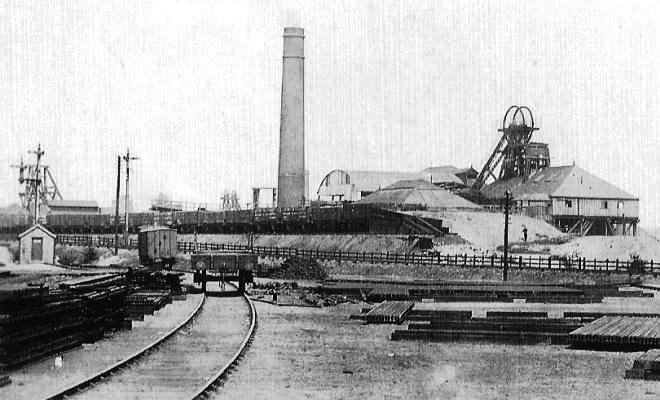The Lofthouse Colliery was in the North Area of the National Coal Board and was about 2 miles to the north of Wakefield on the western fringe of the workable coalfield. Production began at the colliery in 1877 and by 1973 the colliery produced 18, 500 tons of saleable coal per week and employed 837 men below ground and 207 at the surface. The colliery closed in 1981.
There were four shafts. The A was the downcast and was 18 feet 6 inches in diameter and the B, the upcast was 15 feet in diameter were at Lofthouse and the Silkstone which was a downcast and the Beeston which was upcast of 14 feet in diameter were at Wrenthorpe about one and three quarter miles to the south. The Silkstone shaft had winding equipment but there were no winding facilities at the Beeston shaft. At the top of the B shaft there were three Aerex fans in parallel which extracted 180,000 cubic feet of air per minute at 7 inches water gauge. A Keith Blackman centrifugal fan extracted 60,00 cubic feet per minute at 3.2 inches water gauge at the Beeston shaft at Wrenthorpe.
The coal was won from longwall advancing mechanised faces and the seams that were worked in descending order were, the Flockton Thin which had three working faces, the Eleven Yards with one working face and the Beeston which had two working faces. Development was taking place in the Blocking Bed seam which lay between the Eleven Yards and the Beeston seams. The main intake at the Lofthouse A and B shafts was from the old Haigh Moor workings and was between 160 and 230 gallons per minute depending on the season. At the Wrenthorpe shafts there was a well shaft 63 feet deep, from which 33 to 35 gallons of water per minute were pumped. The make of water in the main shafts at Wrenthorpe was only 15 gallons per minute pumped from the Silkstone pit bottom.
The south 9B district was in the Flockton Thin seam to the west of the South 4 loader gate and the face was 5,600 yards from the Lofthouse pit bottom. The Flockton seam was 34 inches thick which included a dirt band three inches thick. The roof was of a medium grey shaley mudstone and the floor was also of mudstone. The face lay about 220 yards below the surface and two seams were worked above it 120 to 130 years before. They were the Gawthorpe, (Warren House) at a depth of 50 yards and the Top Haigh Moor at 120 yards. The Silkstone seam was about 80 yards below the Flockton Thin and was worked around 1914.
In 1973 a serious accident occurred when the miners tunnelled into old flooded workings releasing millions of gallons of water and killing 7 miners. The full report of this can be found here.
Return to previous page

